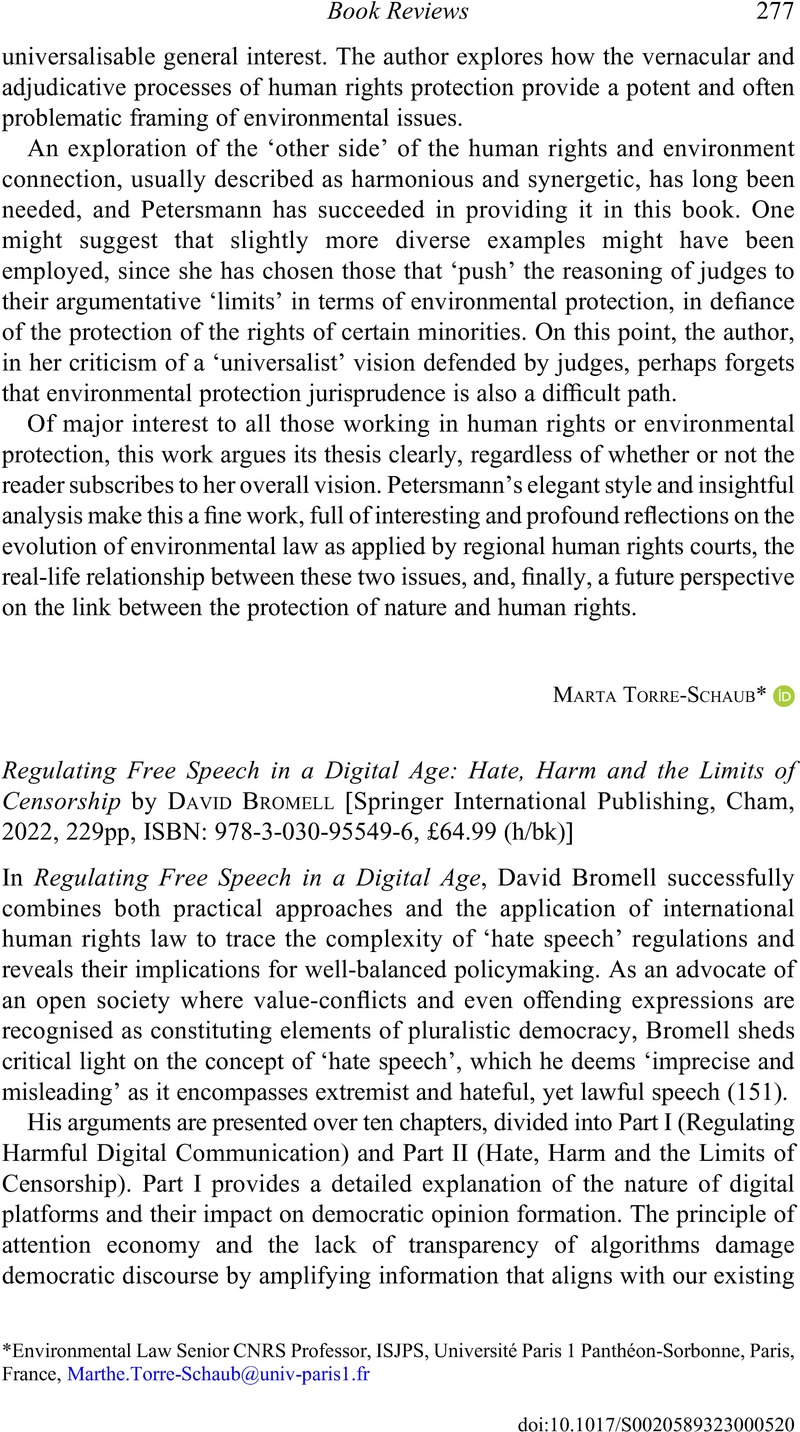No CrossRef data available.
Article contents
Regulating Free Speech in a Digital Age: Hate, Harm and the Limits of Censorship by David Bromell [Springer International Publishing, Cham, 2022, 229pp, ISBN: 978-3-030-95549-6, £64.99 (h/bk)]
Review products
Regulating Free Speech in a Digital Age: Hate, Harm and the Limits of Censorship by David Bromell [Springer International Publishing, Cham, 2022, 229pp, ISBN: 978-3-030-95549-6, £64.99 (h/bk)]
Published online by Cambridge University Press: 12 December 2023
Abstract
An abstract is not available for this content so a preview has been provided. Please use the Get access link above for information on how to access this content.

- Type
- Book Reviews
- Information
- Copyright
- Copyright © The Author(s), 2023. Published by Cambridge University Press on behalf of British Institute of International and Comparative Law


